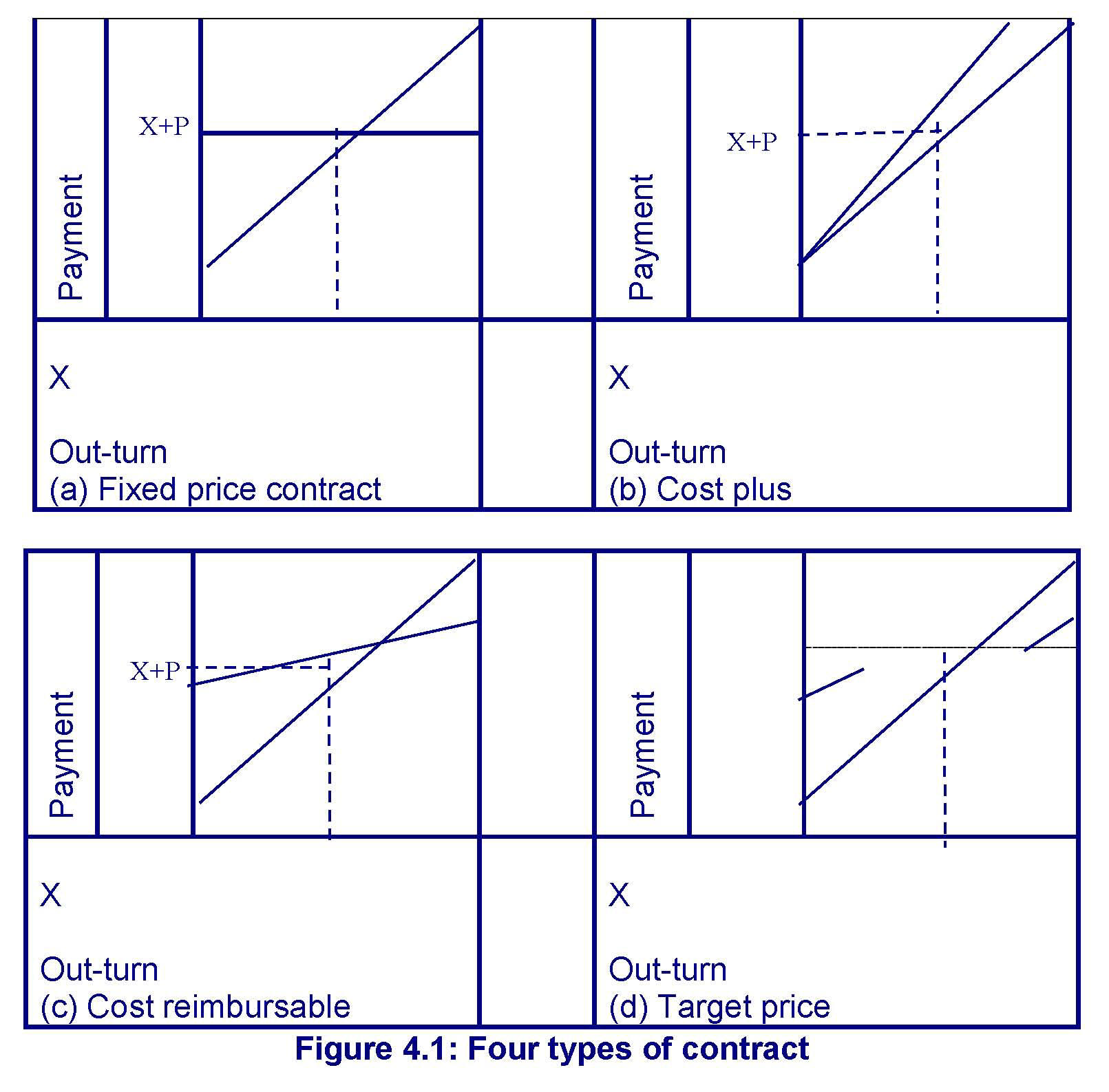|
4.2 Deflection
There are three ways of deflecting risk:
-
Through insurance:
by which it is passed on to a
third party.
-
Through bonding:
by which a security is held against the risk.
-
Through the contract:
by which it is passed between
owner, contractor and subcontractors.
1.
Insurance:
A third party accepts an insurable risk for the payment
of a, premium, which reflects the impact of the risk and
the likelihood combined with the consequence.
2.
Bonding:
One or both parties to a contract deposit money into a
secure account so that if they or either party defaults,
the aggrieved party can take the bond in compensation.
This is a way of transferring the risk of one party
defaulting to that organization.
3.
Contract:
Through contracts the risk is shared
between owner contractor and subcontractors.
There are two common principles of
contracts:
a)
Risk is assigned to that pony most able
and best motivated to control it.
There is no point passing risk onto a
contractor or subcontractor if neither has the power or
the motivation to control it. The Institution of Civil
Engineers is currently revising its standard forms of
contract around this principle. There are four styles of
contract for different approaches to sharing risk:
-
Fixed price
-
Cost-plus
-
cost reimbursable
-
Target cost.
b)
Under fixed price contracts.
In Figure 4.1-a, the contractor accepts all the risk by
taking a fixed fee for the work regardless of how much
it costs. It is assumed that the owner has completely
specified the requirements and as long as they do not
change the contractor can meet a given price. This
approach is adopted for turnkey contracts, where the
contractor takes full responsibility and delivers to the
owner an operating facility. The owner has no role in
its construction. Often in fixed price contracts the
owner and contractor haggle over every change arguing
over which one of them caused it and whether it is
within the original specification.
When the owner cannot specify the
requirements,
the contractor should not accept the risk, but it
should be borne by the owner. The simplest way is
through cost-plus contracts, Figure 4.1-b. The
owner refunds all the contractor’s costs and pays a
percentage as profit. The disadvantage is that the
contractor is still responsible for controlling costs,
and yet the higher the costs the higher the profit. This
is a recipe for disaster as the party responsible for
control is not motivated to do it; in fact the exact
opposite. It is possible to adopt strict change control
and that passes responsibility for controlling costs
back to the owner, but can lead to strife. Typically,
cost-plus contracts are used on research contracts.
Another way of overcoming the problem
is to pay the contractor a fixed fee as a
percentage of the estimate, instead of a percentage of
the out-turn. This is a cost reimbursable contract.
Figure 4.1-c. The contractor can be motivated to
control costs if paid a bonus for finishing under
budget, or charged a penalty if over budget. However,
the parameters for the bonus or penalty must be
carefully set to ensure that the accepted risk is not
beyond the contractor’s control. Even without a bonus
the contractor may be motivated to control costs, as
that increases the percentage return.
Figure 4.1: Four types of contract

A related approach is target cost, Figure
4.1-d. The contractor is paid a fixed price, if the
out-turn is within a certain range typically
±
10 per cent of the budget. If the cost goes outside this
range, then the owner and contractor share the risk at
say 50p in the pound. If the costs exceed the upper
limit, the owner pays the contractor an extra 50p per
pound of overspend and if the price is below the range
the contractor reduces the price. This is often used on
development projects where there is some-idea of the
likely out-turn but it is not completely determined. The
contractor may also share in the benefits from the
product produced.
c)
Risk is shared with subcontractors if it
is within their sphere of control.
To achieve this, back-to-back contracts are used: the
clauses in the contract between owner and contractor are
included in that between contractor and subcontractors.
In some instances, where the contractor feels squashed
between two giants and accepts quite severe clauses from
the owner to win the work but believes that the
subcontractors will not accept them because they do not
need the work. This often happens to contractors on
defense or public sector projects. The way to avoid this
is to try to get the subcontractors to make their
contracts directly with the owner and use the owner's
power to pull the supplier into line. The supplier may
not need the business from the contractor but may have a
better respect for the owner.
|
 Risk Assessment and
Risk Management(4)
Risk Assessment and
Risk Management(4)